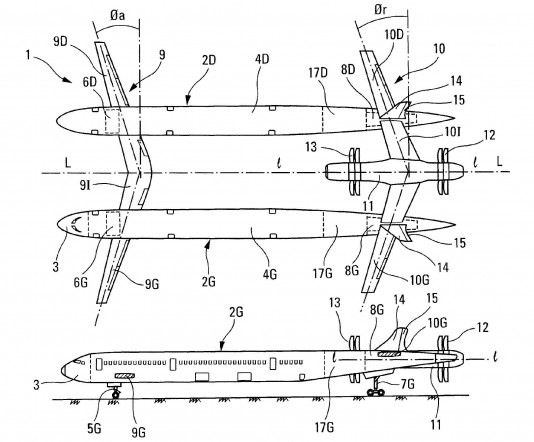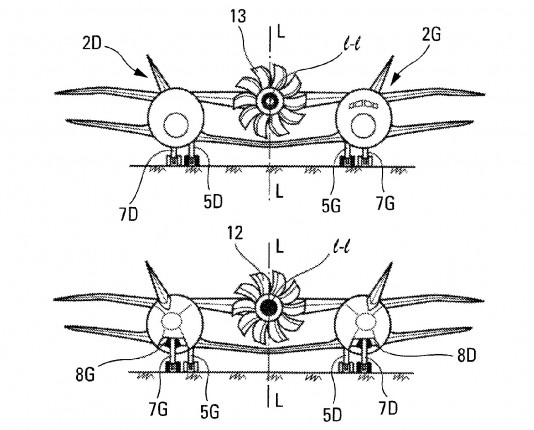The cutting edge of aviation thinking must still go 2D when submitting a patent application.
All current commercial aircraft are either single or dual aisle with the engines mounted on (turboprop) or under (jet) the wings. But that doesn’t stop aeronautical engineers from thinking out of the box about the future of air travel. Unfortunately, when they submit patent applications for cool new designs, the most technologically advance manufacturers have to revert to 2D when they send their ideas to the patent office.

Take the recent submission to the US Patent and Trademark Office from Airbus, for a double-fuselage aircraft. It is an idea for a high-capacity passenger airline that uses two fuselages, twin forward-sweeping wings, and turboprop propulsion. All illustrations submitted for the patent application—as required by law—are 2D line drawings.
The Airbus design for twin fuselages is not original; Germany built a few “zwilling” (German for “twin”) aircraft during World War II. Boeing submitted a patent for a commercial airliner using twin fuselages in 1979. Both the Airbus and Boeing patent applications say the design reduces wing bending, which helps to reduce total aircraft weight. The newer Airbus patent modifies the wing placement for increased lift and less turbulence.
Maybe someday we’ll see one of these designs become a real aircraft, but for now it would be good enough if we could just see the ideas in 3D.






